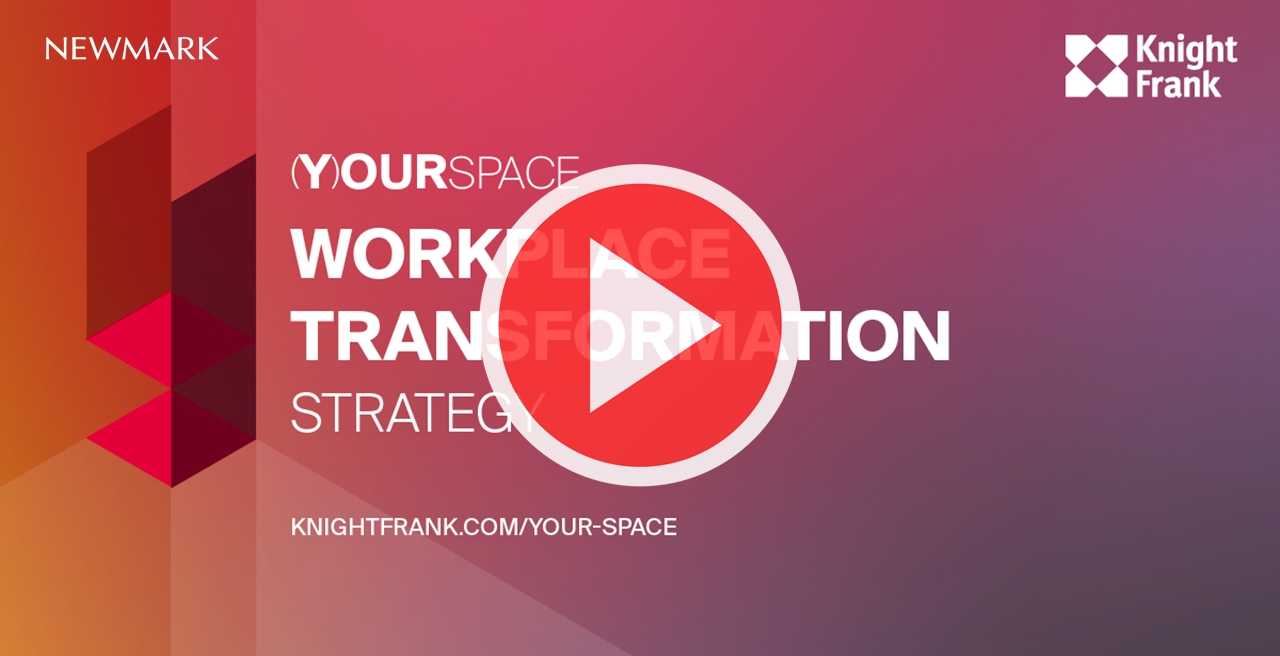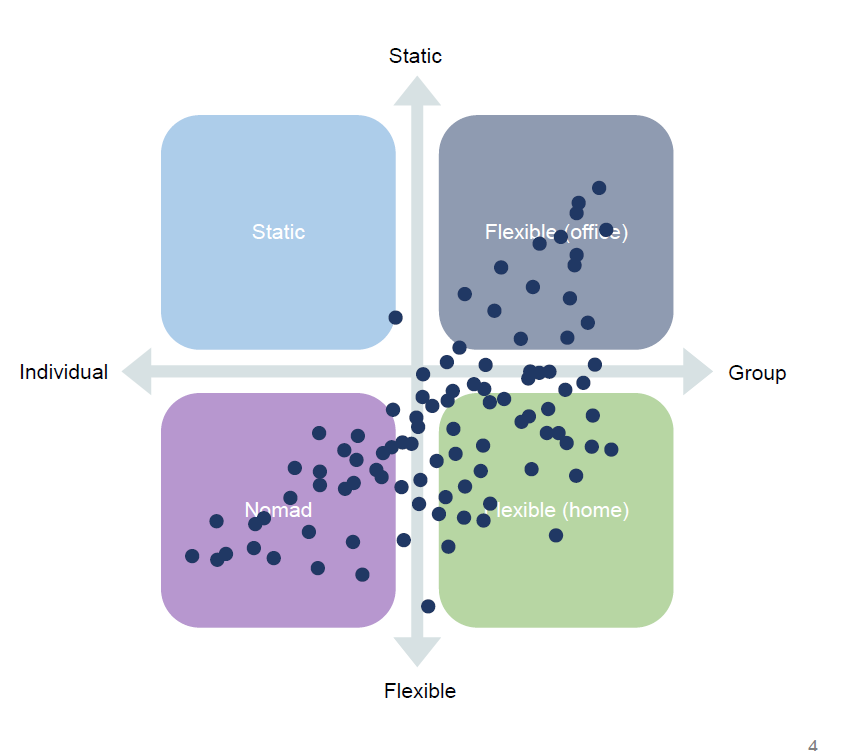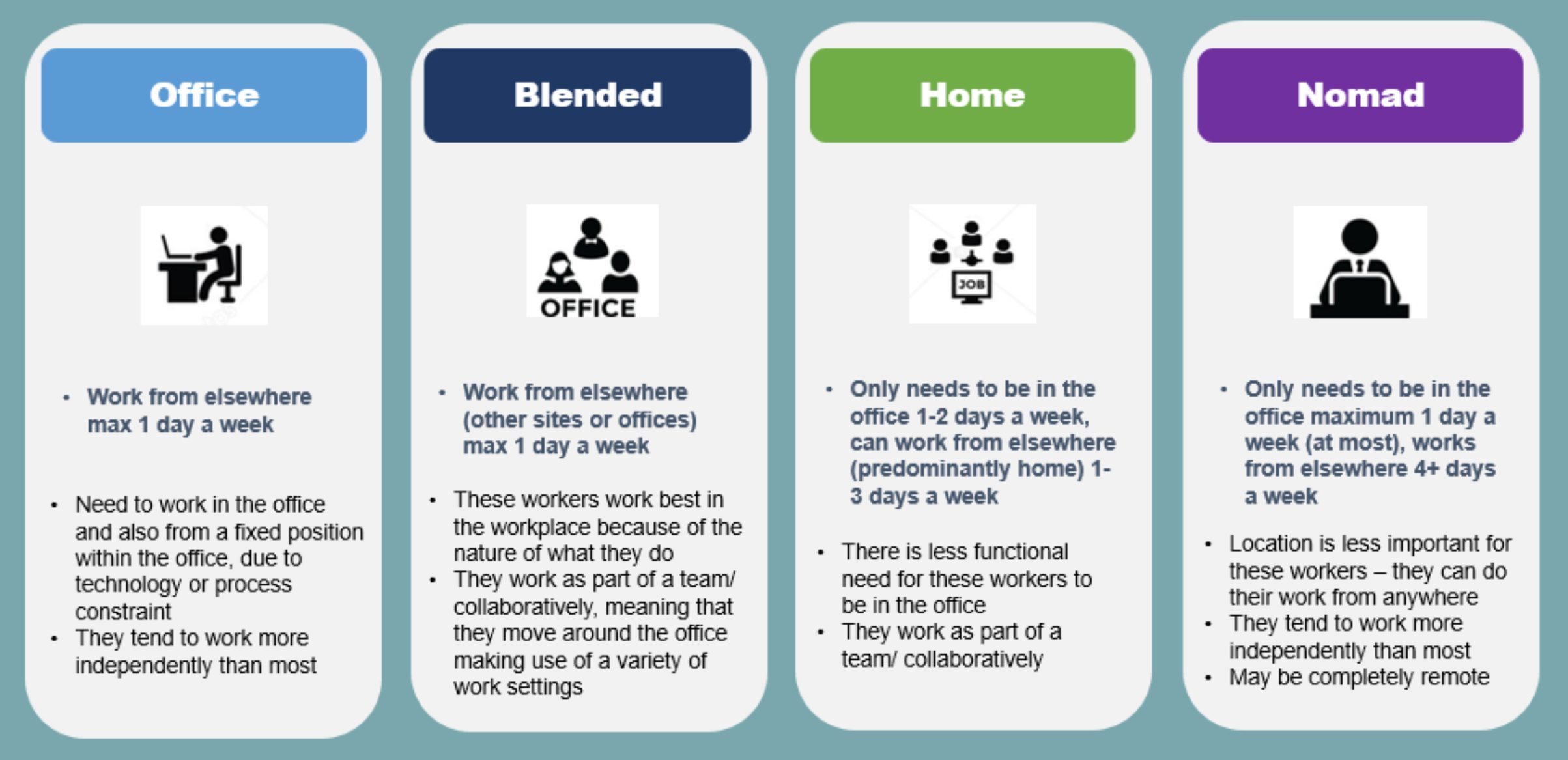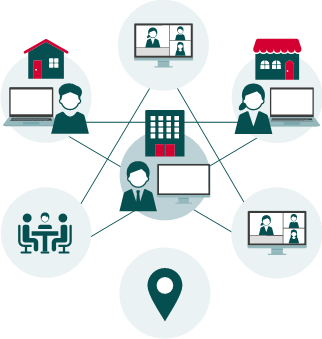How to Implement a Hybrid Working Framework
As we’ve previously explored, new models of work are set to emerge in a post-Covid world of work. In this guide, we’ll explore the fundamentals of hybrid working, how you can map your employees to the hybrid framework, why profiling is a necessary tool in this process, and how this will help you transform your business.
7 minutes to read
Our (Y)OUR SPACE research identified Strategy as one of the ‘four Ss’ set to shape our future workplaces. As the pandemic has challenged the status quo of how people work, leaders have begun questioning how they can harness the power of digital productivity, whilst also reaping the rewards of in-person collaboration. But what are the logistics of a blended future? While the notion of hybrid working has often been posed as a solution, how can the theory be put into practice, and how can it be aligned to wider business strategies?

In a post-Covid world of work, the greatest opportunity lies in exploiting the variety of spaces and places. Employees across the world have been voicing their desire to retain a better work-life balance and a closer connection to their local communities – which many of us have experienced (albeit to varying degrees) whilst working from home.
For businesses, too, it makes commercial and environmental sense for us to seek out the energising environment of a local café to ‘get in the zone’ for writing a pitch, crunch ideas with a project team at a central coworking space, come together for a quarterly town hall at our company’s HQ, or retreat to the peace and quiet of a phone booth when we need to.
The challenge businesses now face is lining up those options so that each task can be carried out in the best place – allowing for the fact that the ‘best place’ will differ from person to person – within a system that is fair, accountable and ultimately drives the business towards its goals and objectives.
What is hybrid working? And who is it for?
The term ‘hybrid working’ has been widely circulated. But what does this newly ubiquitous term mean in practice? Moreover, who is it for? Is it a cost-driven initiative with the primary goal of shrinking office requirements? Or is it a genuine response to employees’ reported desire to retain the better aspects of WFH? And what is key to making it a success?
These key questions are worth considering in tandem since success and intent are often linked. Indeed, businesses need to be sure that they are introducing these schemes for the right reasons.
How to map your employees to a hybrid framework
By its very nature, hybrid working does not lend itself to a simple definition. It’s better to think of it as a spectrum along two axes: the amount of collaboration required and ability to do the work virtually (that is, not being tied to a particular work setting, piece of equipment, process or institution).

The diagram above, for example, can be used to understand hybrid workers’ needs – with the dots representing how employees might ‘scatter’ across these two axes (collaboration required and the ability to do the work virtually).
The result of this exercise should be that your organisation’s unique correlation on the diagram reflects the nature of what you do and how you do it – essentially, it’s your company’s ‘DNA’. This is the foundation from which it becomes possible to map out the requirement and genuine need for physical space and proximity to other people.
Layering specific requirements onto your hybrid framework
As a business, you’ll need to layer certain elements on top of this to get the full picture of what you require. For example, in a highly collaborative organisation, is this activity mostly external or internal?
In order to do this, it’s necessary to consider four elements:
-
Tasks & activities: What are the key modes of human activity within your organisation?
-
Environment: What types of environment best support these activities?
-
Relationships: What are the key working relationships and who do they exist between?
-
Culture: What drives the organisational culture and purpose? And at an individual level, what motivates employees? And what are their personal preferences?
When it comes to gathering the data behind these four elements, companies need to engage with their stakeholders – including clients, managers and employees. To do this, tools include senior management interviews; heads of department profiling their staff; employee surveys; focus groups; and client feedback.
In addition to this, data from a variety of sources can provide a rich insight into activity within different departments and teams. These data sources include virtual platforms logs, such as Microsoft Teams, Zoom, e-mail logs, Wi-Fi analytics and occupancy data. A combination of these two approaches ensures that there is no disconnect between what management believes is the right strategy and employee sentiment. Involving employees in the conversation as early as possible also begins the crucial change management process.
What is profiling and why is it necessary?
Profiling is essentially a business planning tool which takes the rich and varied information of a hybrid working analyses and reduces it to a number of profiles, which a workforce can then be categorised against. Below are some examples of profiles, from independent office workers who are restricted by their processes or technology-usage, through to nomads who don’t view location to be of significant importance and can work entirely remotely.

Behind the above example is data on client expectations, work activity, culture and personal preferences.
How to implement your hybrid working transformation
Businesses can then implement their transformations through the following steps:
-
Vision and leadership
Senior leadership – both current and future, need to develop a vision for the future ways of working, informed by data and profiling exercises.
-
Client engagement strategy
Businesses need to consider what the right blend of virtual and physical engagement is for the future, including events and meetings, and based upon client insight.
-
People policy and diversity
Profiling needs to be supported by flexible working policies and it needs to be reflected within the overall employee value proposition. There are several opportunities in a ‘work from anywhere’ world to provide flexibility and autonomy that will attract and retain staff, or enable the business to tap into different labour markets, geographically or through broadening access.
The health and safety of employees – regardless of where they work – needs to be addressed through risk assessments and appropriate mitigation (including training and equipment provision).
-
Future workplace design
The two questions that need to be addressed are: What is the purpose of the future office? And what is the size? Both are driven by profiling – the output of which feeds into a space budget.
The purpose of the office will vary depending on how much ‘virtual business’ is a part of the company’s vision for its future way of working, but fundamentally, the emphasis should be less on focused work activity and more on collaboration, innovation, education, cohesion and the culture of the business.
-
Digitisation and IT
Businesses need to consider how the digitisation of processes and technology platforms enable flexibility and enhance productivity, whilst reducing waste, such as printing or unnecessary business travel.
-
Environment and sustainability
A hybrid working framework can play a significant role in addressing the drive to net zero by shareholders, investors, clients and even governments. There are also many opportunities in this framework to design and operate more sustainable workplaces and platforms.
-
A workplace-as-a-service strategy
Businesses will need to consider how they can deliver a workplace-as-a-service strategy, integrating technology and the workplace, supporting people wherever they are and ensuring they are safe and well. This means defining and delivering a service ethos that starts with the experience that you want to create and then working backwards to the physical and virtual infrastructure that will deliver it.
-
Change management and engagement
It would be a mistake to conclude that because we have worked from home for a while that we do not need to manage that change. There will be multiple changes in terms of how we use and behave in the office. Management styles, team dynamics and collaboration efforts will start to work in different ways. All of this needs to be communicated effectively, and managers and teams need to be educated and developed appropriately.
What will we see in the future workspace?
| Less |
More |
| Desks |
Collaborative work settings |
| Formal meeting rooms |
Flexible project rooms |
| Conference spaces |
Hybrid event spaces |
| Teleconferencing rooms |
Video conferencing rooms |
| Printers |
Virtual workspace e.g. Miro
|
| Fixed workstations |
Touchdown & shared workbenches |
| Default presence in the office |
Scheduling of office presence for specific purpose |
| Monotony |
Variety |
How does this help me transform my business?

Above: A post-Covid network of workplaces
In the field of organisational design, it has been accepted for several years now that businesses’ structures and processes are becoming increasingly fluid in order to survive and thrive in dynamic and complex environments. Workplace infrastructure is no different.
For further information on anything discussed in either the above article or video, please do not hesitate to get in touch with the team.
Neil McLocklin
Partner | Strategic Consulting | Europe
Neil.McLocklin@knightfrank.com
Samarth Kasturia
Director | Workplace & Strategic Consulting | APAC
Samarth.Kasturia@asia.knightfrank.com
Roy Abernathy
Executive Vice President | Workplace Strategy & Human Experience | USA
Roy.Abernathy@ngkf.com